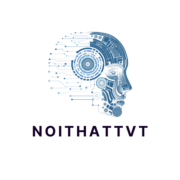Key Takeaways
- Transformation of Computing: The 1960s saw a transition from room-sized machines to more accessible computers, primarily driven by the introduction of integrated circuits and transistors.
- Influence of Programming Languages: The emergence of programming languages like COBOL and FORTRAN revolutionized human-computer interaction, making software development more efficient and user-friendly.
- Mainframe Dominance: Mainframe computers, particularly IBM’s System/360, played a crucial role in data processing for governmental and corporate organizations, enhancing operational efficiency.
- Rise of Minicomputers: The DEC PDP-8 democratized computing by being smaller and more affordable, opening access to computing resources for smaller businesses and educational institutions.
- Automation in Business: Computers automated repetitive tasks, such as payroll and inventory management, leading to increased productivity and accuracy in business operations.
- Cultural and Educational Impact: The integration of computers into educational systems began shaping new learning methodologies, fostering collaborative projects, and cultivating a generation prepared for the technological future.
The 1960s marked a pivotal decade in the evolution of computers, transforming them from massive, room-sized machines into more accessible technology. As the space race intensified and demand for data processing grew, innovations began to emerge at a rapid pace. This era witnessed the birth of integrated circuits, paving the way for smaller and more efficient computers.
During this time, organizations and universities became the primary users of computers, utilizing them for complex calculations and research. The introduction of programming languages like COBOL and FORTRAN revolutionized how people interacted with machines, setting the stage for the future of computing. Understanding the advancements and challenges of this decade reveals how far technology has come and its profound impact on society.
Computers In The 60s
The 1960s marked a pivotal era in computer technology, characterized by rapid advancements and increased accessibility. Integrated circuits emerged as a foundational technology, significantly reducing the size and cost of computing systems. These innovations facilitated more sophisticated designs and improved processing capabilities.
Organizations and universities played critical roles as primary users of computers. They employed computers for extensive data processing, complex calculations, and research purposes. The demand for efficient data handling, driven by the space race, spurred innovation and adoption in various fields, from scientific research to business analytics.
The introduction of influential programming languages, such as COBOL and FORTRAN, transformed human-computer interaction. COBOL streamlined business applications, making it easier for companies to manage their operations. FORTRAN became essential for scientific and engineering tasks, providing a platform for complex computations.
The adoption of time-sharing systems emerged during this decade, allowing multiple users to access computing resources simultaneously. This development significantly enhanced collaborative work, paving the way for future networking technologies. Overall, the 1960s laid crucial groundwork for modern computing, influencing both technology and society at large.
Key Developments In Computer Technology

The 1960s marked pivotal advancements in computer technology, laying the groundwork for future innovations. Several key developments emerged during this transformative decade.
Mainframe Computers
Mainframe computers dominated the technological landscape of the 1960s. These large systems catered primarily to governmental and corporate entities, providing extensive data processing capabilities. IBM’s System/360, introduced in 1964, exemplified this era’s technological leap, offering compatibility across multiple applications and programs. Mainframes enabled organizations to run complex calculations, manage extensive records, and execute large-scale projects, significantly enhancing operational efficiency.
Transistors and Their Impact
Transistors revolutionized computer design and functionality in the 1960s. Replacing vacuum tubes, transistors reduced power consumption and physical size while increasing reliability. This shift allowed manufacturers to create smaller, faster, and more efficient computers. Significant improvements in computational speed and storage capacity emerged as a direct result. The integration of transistors facilitated the development of integrated circuits, leading to more compact systems that fostered the growth of diverse applications across industries.
Significant Computer Models
The 1960s featured several groundbreaking computer models that influenced modern computing. Two notable examples include IBM’s System/360 and the DEC PDP-8, each with distinct attributes and contributions.
IBM System/360
IBM’s System/360, launched in 1964, marked a significant shift in computing. It introduced a family of compatible computers, allowing businesses to upgrade and expand their systems without extensive reprogramming. The System/360 employed a unified architecture, which simplified software development and standardization across different applications. Its use of integrated circuits improved reliability and performance, making it a preferred choice for large-scale data processing in corporations and government agencies. The system supported advanced features, including virtual memory and time-sharing, which enhanced operational flexibility and efficiencies.
DEC PDP-8
The DEC PDP-8, released in 1965, is recognized as one of the first successful minicomputers. Smaller and more affordable than traditional mainframes, it democratized access to computing power, making it suitable for smaller businesses, laboratories, and educational institutions. The PDP-8’s architecture allowed users to implement custom programs easily, promoting experimentation and innovation. Its popularity led to a wide range of applications, from scientific research to process control, solidifying its status as a pivotal model in the evolution of personal computing. The legacy of the PDP-8 continues to influence modern computer design and educational computing systems.
The Role Of Computers In Business

In the 1960s, computers played a crucial role in transforming business operations. Organizations harnessed the power of computing to enhance efficiency and accuracy in various processes.
Automation of Tasks
Automation of tasks gained momentum with the advent of computers. Businesses utilized computers to handle repetitive tasks, such as payroll processing and inventory management. This shift reduced human error and freed employees from mundane activities, allowing them to focus on more strategic functions. For instance, companies like IBM and General Motors implemented automated systems for manufacturing and data entry, significantly improving productivity. Additionally, processes like billing and record-keeping became streamlined, which increased operational efficiency and lowered costs.
Influence on Data Processing
Data processing underwent a significant transformation due to the introduction of computers. Organizations leveraged computing power to analyze large volumes of data quickly, facilitating better decision-making. The 1965 introduction of IBM’s System/360 marked a pivotal moment, as it enabled businesses to process transaction data in a fraction of the time required before. Companies began generating comprehensive reports, enhancing insights into operations and market trends. Furthermore, the development of programming languages like COBOL permitted more sophisticated data analysis, becoming essential for business applications. This capability set the stage for the future of business intelligence and analytics.
Cultural Impact Of Computers In The 60s
The 1960s marked a transformative era for society’s interaction with computers, influencing education and public perception of technology.
Computers in Education
Computers entered educational institutions during the 1960s, significantly impacting learning and teaching methodologies. Universities began utilizing computers for complex simulations and data analysis, enhancing research capabilities across various disciplines. For instance, the introduction of time-sharing systems allowed students to access computing resources, fostering collaborative projects and interactive learning experiences. Additionally, educational institutions developed curricula that incorporated programming languages like FORTRAN, preparing students for future technological advancements. Local schools also began exploring the potential of computers, albeit at a slower pace, laying the groundwork for future inclusion of technology in the classroom.
Public Perception of Technology
Public perception of technology experienced a notable shift in the 1960s, driven by the widespread media coverage of the space race and advancements in computing. Society began to embrace the idea of computers as powerful tools that could solve complex problems, enhance efficiency, and revolutionize daily life. While initial fears about automation and job displacement surfaced, excitement over technological innovations prevailed. Popular culture reflected this fascination; films and literature began portraying computers as integral parts of the future. This growing optimism set the stage for the consumer technology boom in subsequent decades, influencing how society viewed and interacted with computing technology.
1960s Computer
The 1960s marked a pivotal era in computing that laid the groundwork for today’s technological landscape. Innovations in hardware and software transformed how organizations approached data processing and analysis. The introduction of integrated circuits and programming languages revolutionized accessibility and efficiency in computing.
Mainframe computers became essential tools for businesses and government, while minicomputers democratized technology for smaller institutions. This decade also fostered a cultural shift in the perception of computers, paving the way for their integration into education and daily life. As society began to embrace the capabilities of computers, the stage was set for the explosive growth of personal computing in the years to come. The legacy of the 1960s continues to influence the evolution of technology today.

